A baseball game in Japan
When I took a group of Dutch students to the US a few years ago, I insisted that we attend a professional baseball game, something they were distinctly unenthusiastic about. They said it was a boring game. I told them it wasn’t about the game; it was about the whole event around the game: the fans, the energy, the food, and so on. I felt it would be an excellent way to get a look at “real America.” Baseball is the quintessential American game, after all. They admitted afterwards that it had indeed been a lot of fun and “very American.”
So when I went to a baseball game in Japan, I did it out of curiosity. Is it as much of a scene in Japan as it is in America? It turned out that a baseball game in Japan is much like a baseball game in the US, with a few fun differences.
The game I went to was between the Hanshin Tigers and the Hiroshima Toyo Carp at the Tigers’ home stadium in Osaka. Not knowing anything about either team, I chose a seat randomly, and ended up in the middle of the Hiroshima fan section in the cheap seats behind left field.
The stadium looked pretty much the same as an American one, except with fewer of the huge screens that are used to keep the spectators amused. Like at any game in the US, hawkers moved constantly through the crowd, calling out what they were selling. As far as I could tell, the choice was limited to soft drinks and beer.
The food stands behind the seats sold, not surprisingly, Japanese fast food like grilled meat on sticks or Bento boxes, but hot dogs, French fries and other “American” food was also available.
The spectators, however, were unlike an American crowd. Watching baseball in Japan is a much more active pastime than in the US. Each side, when their team was at bat, kept up a constant—and I mean constant—chant.
Not only did they keep chanting, each side had a band—drums and trumpets, mainly—among the spectators, so the chant was led by the musicians. Many of the spectators had small plastic baseball bats, which they banged together to the beat of the chanting.
It was all surprisingly polite, though. They took turns. “Our” side didn’t start up any chants when the other team was at bat, and vice-versa. It seemed to be understood that the supporters of the team at bat had that right.
It was a mid-season game, and clear to me from the first inning that the Tigers were far better than the Carp. At a game in the US, sitting among the losing team’s fans, I would have seen a certain grumpiness set in, with some fans, in their disappointment, shouting abuse at the team they’d come to support.
I asked a nearby spectator who spoke good English whether that was going on here. He told me it was, a bit, but not a lot. He said because it wasn’t such an important game, they were all keeping in a good mood. That was the impression I had as well. “We” might be losing, but we were having a good time cheering anyway.
You might also enjoy these articles:
- Matsumoto: My first Japanese castle
- Barefoot in Japan: A bumbling fool
- Traveling by train in Japan: 8 tips
The seventh-inning stretch at a baseball game in Japan
In the US, between the two halves of the seventh inning, the fans of both teams stand up and sing, swaying together, the song “Take Me Out to the Ball Game.” It’s called the seventh-inning stretch. One of the things I was most curious about was whether the Japanese had some version of it, and, if so, what did they do?
As the end of the sixth inning approached, I noticed that the fans of the visiting team, Hiroshima, were blowing up long balloons in their team’s color. I had noticed the balloons before for sale, but assumed they were just team merchandise, like the baseball hats and team shirts that so many of the fans were wearing.
When the sixth inning ended, it became clear what was going on. Together, the fans chanted a tune they hadn’t sung before (their version of “Take Me Out to the Ball Game” perhaps?), then released the balloons. I hadn’t noticed, but the balloons were fitted with a ring that made them whistle loudly as they deflated.
The fans of the other team took their turn next, after the first half of the seventh inning. They began inflating the balloons after the second out, and after the last out, they chanted and released their balloons.
The Tigers won the game 5 to 2, but the Hiroshima fans didn’t seem particularly disturbed by it. And it was fascinating to see how this quintessentially American sport has slightly but distinctly transformed into a quintessentially Japanese phenomenon. Play ball!
How to attend a baseball game in Japan
One way to get tickets is to show up on game day and buy one at the box office. If it’s not a championship game, your chances are pretty good of getting a seat.
To get tickets in advance, you can go through one of the teams. You can find a listing of all the teams in English on the Nippon league website. There, you’ll see that each team has a website you can click on. Don’t panic if you land on a Japanese website; you should be able to find a tab somewhere to click for English. Find their schedule, choose a game and order your tickets through their site.
I got mine through a site called JapanBallTickets that caters to English speakers wanting baseball tickets. In my case, since I didn’t really care which teams I saw playing, I just chose based on which was happening at the most convenient place and time. As in the US, the ticket prices vary greatly. (Added later: I had trouble booking it and ended up asking my Airbnb host to help me. Looking at the website now, three years later, I think it’s been improved.)
It was easy to get to the stadium, and given the excellent transportation system in Japan, I suspect that all the stadiums are easily reachable by public transportation. If you need help with getting tickets or figuring out how to get to the stadium, ask at your hotel.
Do you like baseball? Have you been to a professional game in the US or in Japan? What did you think?

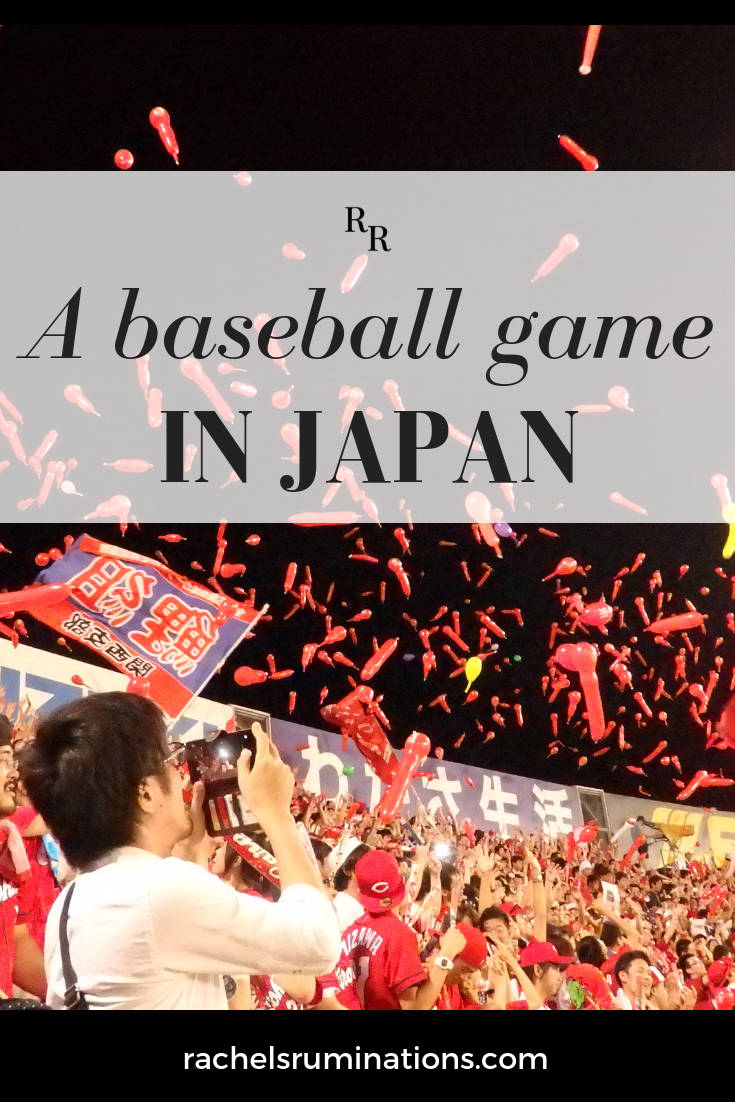



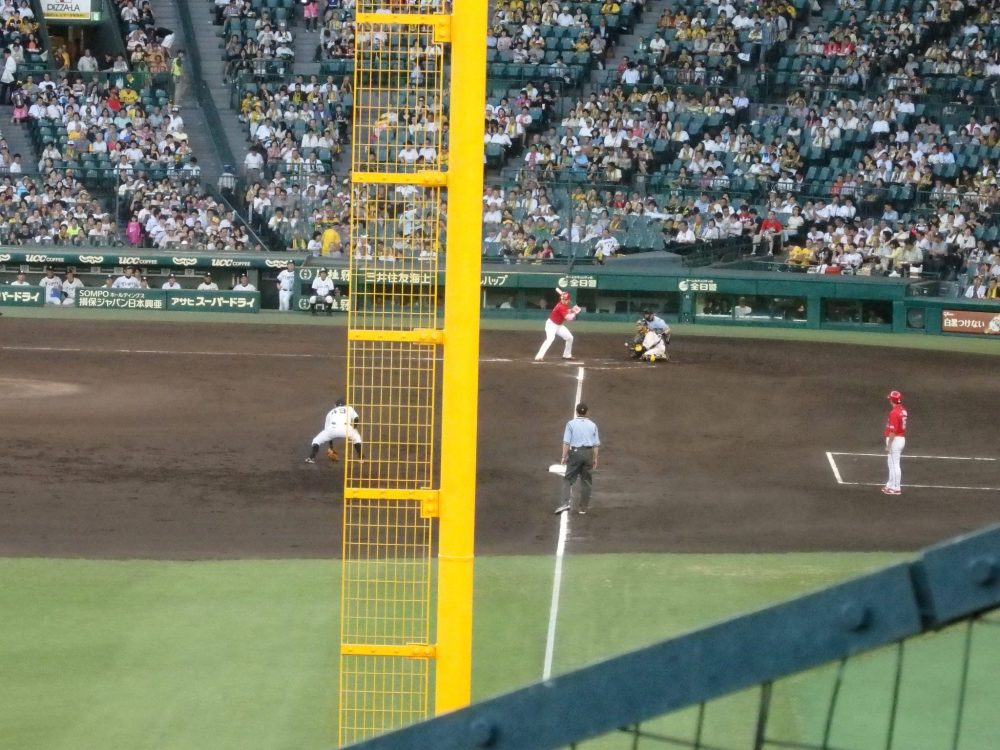
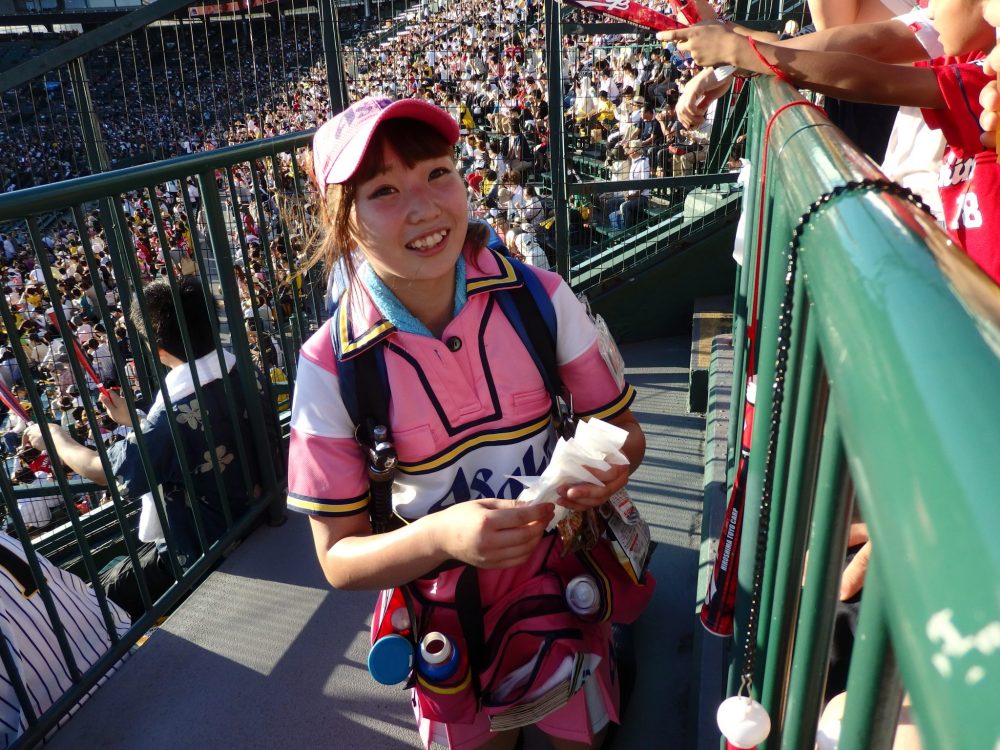
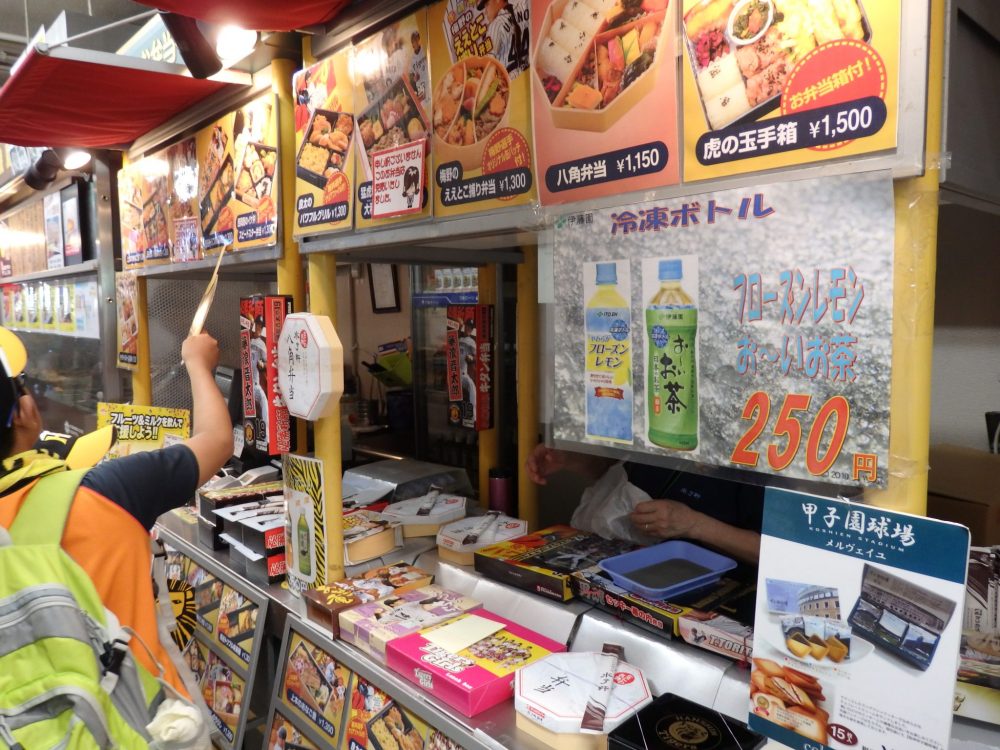
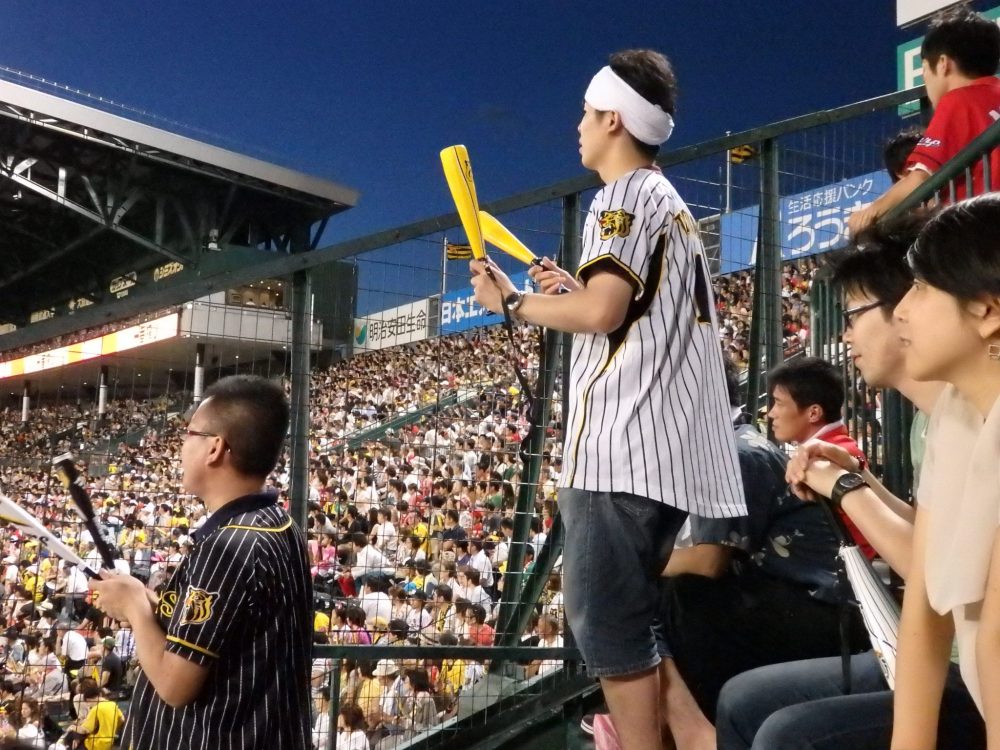
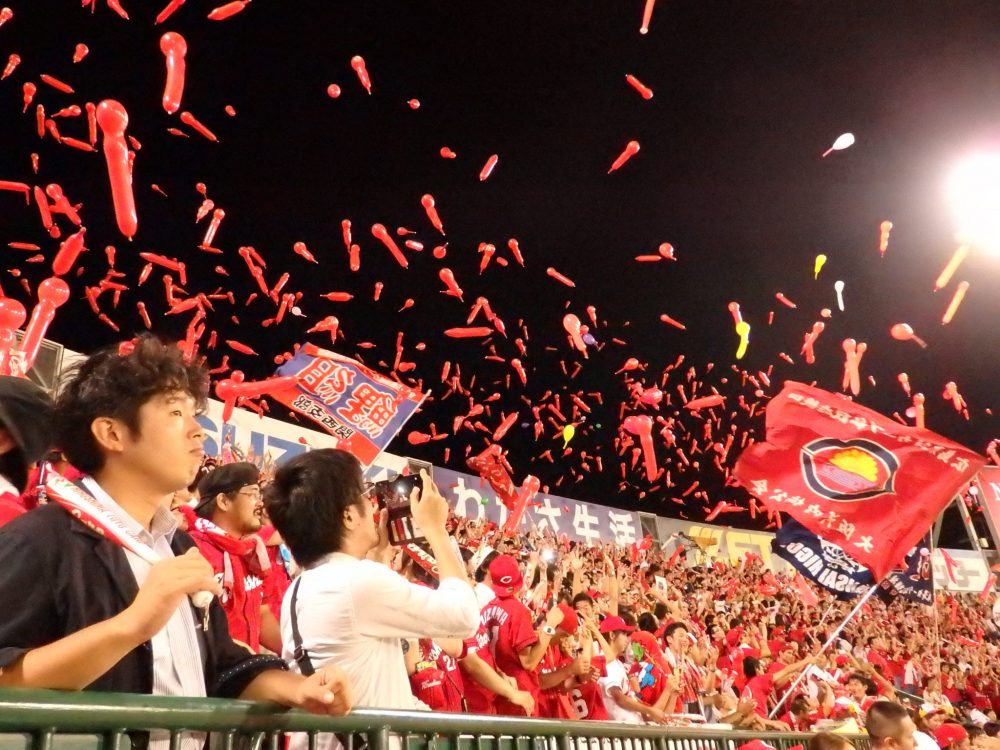


Thanks Rachel – this was a fun read.
Glad you liked it, Charlie!
I am not a baseball fan but I loved reading of the differences between the two. I watched the video and it seemed very organised and “Japanese”. I have seen kids practicing baseball in Japan but not been to a game anywhere, ever!
I’m not particularly a fan either, but I love the atmosphere at a game. And you’re right, it’s so organized! It was as if they’d practiced and decided ahead of time who would stand up on which lines!
Interesting story! I have never been into baseball and I think it is because I grew up with a father who preferred basketball and boxing. I think I have been to only one baseball game in my life (which is weird given that I live so close to the Dodger Stadium). So, in here I learned about both American and Japanese baseball customs.
Take some friends along and go to a game! There’s plenty to entertain you at an American game besides the game itself! Thanks for commenting!
Growing up, I attended my share of baseball games. Not only did I play softball, but my brother’s played baseball and my dad was our coach. We would go to professional games regularly and while I enjoyed watching a live game vs. a televised one, it was the hot dogs that I especially looked forward to. The differences regarding baseball between the two countries is very interesting.
Trumpets? Taking turns chanting? Squeeling balloons? It’s so interesting how a baseball game in Japan differs from the ones in America. If we had time, I think my husband would really enjoy going to one there if we visited. Thanks for the glimpse into what it’s like.
You should! Booking it is difficult, though. I ended up getting my Airbnb host to do it for me, since the only place I could find on line in English charged exorbitantly: more than the cost of the ticket.
This is something we have not seen yet but definitely, definitely want to. We saw the sumo and loved it and think that the atmosphere would be OTT.
I would have liked to see the sumo too! That must be OTT!